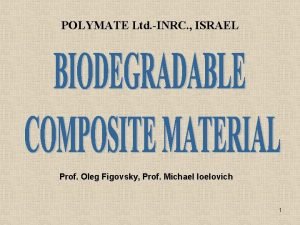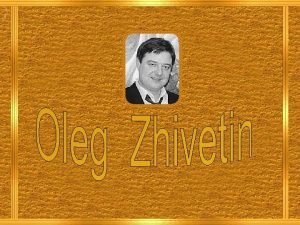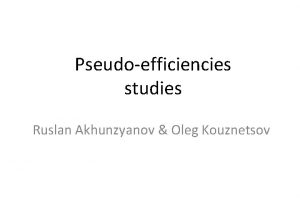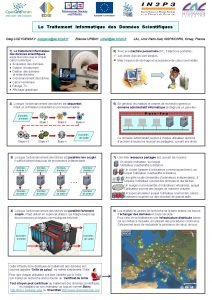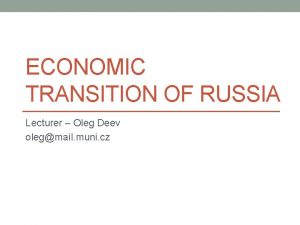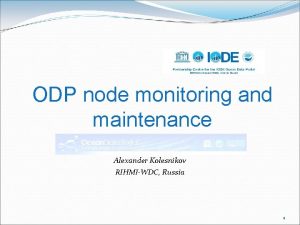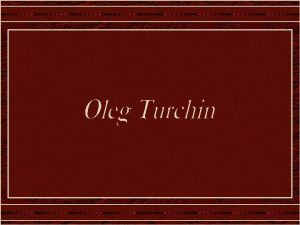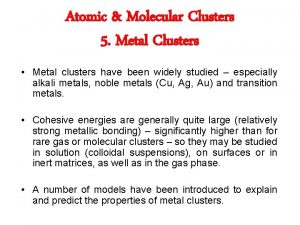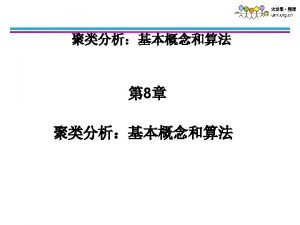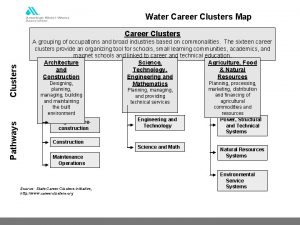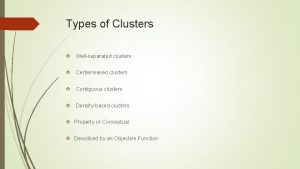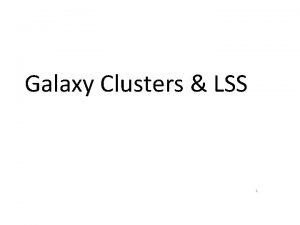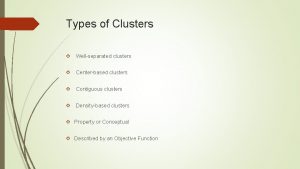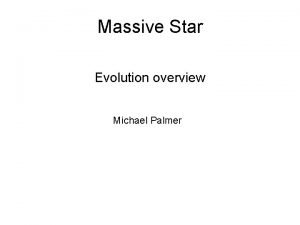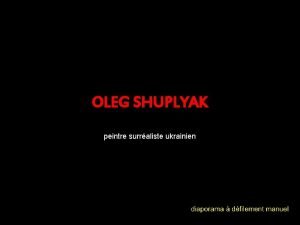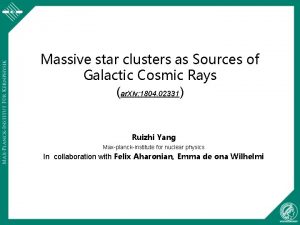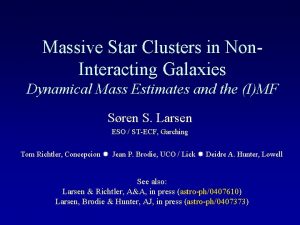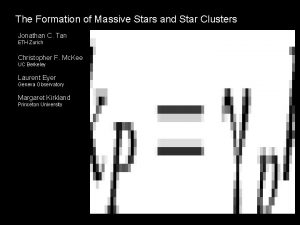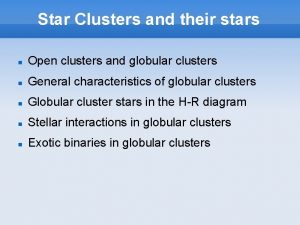Towards Realistic Modeling of Massive Star Clusters Oleg













- Slides: 13

Towards Realistic Modeling of Massive Star Clusters Oleg Gnedin (University of Michigan) graduate student Hui Li

Star clusters are dominant components of active star formation: they connect small-scale SF (local) and global processes in galaxies Adamo et al. 2015 Fraction of all young stars contained in massive star clusters increases with the intensity of star formation, up to 50 -60%

Initial Mass Function of young clusters is almost invariant cutoff mass z 5 slope it’s a number, not a free cluster Cosmological simulation of a Milky Way sized-galaxy (Li & OG 2016): • MF is a power law as observed for young star clusters • Unless star formation is too disruptive (i. e. , 100% SFE)

Cosmological simulations with run-time treatment of H 2 chemistry, stellar feedback, radiative transfer, and subgrid-scale turbulence q Adaptive Mesh Refinement ART code q star formation in molecular gas, supernovae feedback and metal enrichment, stellar mass loss q radiative cooling and heating: Compton, UV background, with density and metallicity dependent rates q 3 D radiative transfer q H 2 formation on dust grains/destruction by UV, with selfshielding and shielding by dust (N. Gnedin & Kravtsov 2011) q Novel treatment of subgrid-scale Ionization by cosmic and local turbulence (Semenov et al. 2016) interstellar UV flux z=3: stars H 2 gas HI gas Zemp et al. (2012) dust atomic and molecular chemistry

In the simulations, cluster mass function remains a stable power-law Different epochs within the same central galaxy Different galaxies at the same epoch (z 3. 3)

Origin of the shape of cluster mass function 107 r fo x ma M d MF e t ec r-law p ex we po 105 Mmax for Schechter MF with Mcut SFR 1. 6 106 Maximum cluster mass is consistent with that expected for a Schechter function with truncation mass scaling as SFR 1. 6 107 Power-law MF emerges from the gradual suppression of SFR of a cluster by feedback of its own young stars

Feedback of own stars terminates star formation within a few Myr and sets the final cluster mass > 103 cm-3 ff = 10 -100% also: > 10 cm-3 ff from SGS turbulence model (Semenov et al. 2016) • spatial resolution 5 pc at z=5 • typical timestep 103 yr – resolved cluster growth • clusters grow from gas mass inside fixed-sized sphere of 10 pc (typical GMC core/clump)

z 3. 3 Massive clusters form within galaxy disks, but the disks are perturbed by frequent mergers and accretion of satellites z 4

Analytical models based on simulations match GC mass and metallicity distributions in MW and in ellipticals in Virgo cluster blue red [Fe/H] 0. 5 [Fe/H] 1. 5 Peng et al. 2006 – HST Virgo Cluster Survey Color/metallicity distribution of GCs in most galaxies is multimodal Each metallicity group tells us about different episodes of cluster formation Muratov & OG 2010 Li & OG 2014 GC formation is triggered by gas-rich mergers, metallicity assigned from observed M*-Z relation for host galaxies

Formation of massive star clusters may be triggered/enhanced by major mergers of gas-rich galaxies • Star clusters form in giant molecular clouds (GMC) • Higher density of globular clusters requires higher external pressure on GMC • Interstellar medium is over-pressured during galaxy mergers • Extreme masses of proto-globular GMC require very gas-rich galaxies In addition, accreted satellites bring their populations of GCs outer GCs in M 31 are associated with tidal streams (D. Mackey)

Gas-rich mergers of massive galaxies trigger cluster formation Li & OG 2016 no merger major merger Cluster MF is more strongly truncated between mergers

Cluster formation efficiency fraction of total mass of young stars contained in star clusters more massive than 104 M observations --- central galaxy --- first satellite --- other satellites z = 3. 3

Summary • Mass function of young star clusters is a truncated power law, both in observations and galaxy formation simulations • Truncation mass and maximum cluster mass scale with SFR • Mergers of gas-rich galaxies may trigger/enhance formation rate of massive star clusters (M > 105 M ) • Globular clusters could be used to trace major episodes of mass assembly of their host galaxies
 Bearing gifts we traverse afar
Bearing gifts we traverse afar Erickson nursing theory
Erickson nursing theory Dimensional modeling vs relational modeling
Dimensional modeling vs relational modeling Difference between a* and ao* algorithm in ai
Difference between a* and ao* algorithm in ai What does star (for star events) stand for?
What does star (for star events) stand for? Oleg simonov musician
Oleg simonov musician Oleg figovsky
Oleg figovsky Maro tashkan
Maro tashkan Oleg kouznetsov
Oleg kouznetsov Oleg lodygensky
Oleg lodygensky Oleg kolesnikov
Oleg kolesnikov Oleg deev
Oleg deev Oleg kolesnikov
Oleg kolesnikov Oleg turchin
Oleg turchin






